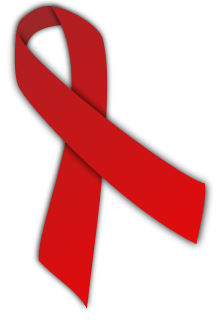Symbol

A symbol is a mark, sign, or word that indicates, signifies, or is understood as representing an idea, object, or relationship. Symbols allow people to go beyond what is known or seen by creating linkages between otherwise very different concepts and experiences. All communication (and data processing) is achieved through the use of symbols.Symbols take the form of words, sounds, gestures, ideas or visual images and are used to convey other ideas and beliefs. For example, a red octagon may be a symbol for "STOP". On a map, a blue line might represent a river. Numerals are symbols for numbers. Alphabetic letters may be symbols for sounds. Personal names are symbols representing individuals. A red rose may symbolize love and compassion. The variable 'x', in a mathematical equation, may symbolize the position of a particle in space.
In cartography, an organized collection of symbols forms a legend for a map.
Etymology
The word derives from the Greek symbolon (σύμβολον) meaning token or watchword. It is an amalgam of syn- "together" + bole "a throwing, a casting, the stroke of a missile, bolt, beam." The sense evolution in Greek is from "throwing things together" to "contrasting" to "comparing" to "token used in comparisons to determine if something is genuine." Hence, "outward sign" of something. The meaning "something which stands for something else" was first recorded in 1590, in Edmund Spenser's Faerie Queene.[1]
Definitions
In considering the effect of a symbol on the psyche, in his seminal essay The Symbol without Meaning Joseph Campbell proposes the following definition: A symbol is an energy evoking, and directing, agent.[2]
Later, expanding on what he means by this definition Campbell says:
- "a symbol, like everything else, shows a double aspect. We must distinguish, therefore between the 'sense' and the 'meaning' of the symbol. It seems to me perfectly clear that all the great and little symbolical systems of the past functioned simultaneously on three levels: the corporeal of waking consciousness, the spiritual of dream, and the ineffable of the absolutely unknowable. The term 'meaning' can refer only to the first two but these, today, are in the charge of science – which is the province as we have said, not of symbols but of signs. The ineffable, the absolutely unknowable, can be only sensed. It is the province of art which is not 'expression' merely, or even primarily, but a quest for, and formulation of, experience evoking, energy-waking images: yielding what Sir Herbert Read has aptly termed a 'sensuous apprehension of being'.[3]
Heinrich Zimmer gives a concise overview of the nature, and perennial relevance, of symbols.
- "Concepts and words are symbols, just as visions, rituals, and images are; so too are the manners and customs of daily life. Through all of these a transcendent reality is mirrored. They are so many metaphors reflecting and implying something which, though thus variously expressed, is ineffable, though thus rendered multiform, remains inscrutable. Symbols hold the mind to truth but are not themselves the truth, hence it is delusory to borrow them. Each civilisation, every age, must bring forth its own."[4]
In the book Signs and Symbols, it is stated that A symbol ... is a visual image or sign representing an idea -- a deeper indicator of a universal truth.[5]
Symbols are a means of complex communication that often can have multiple levels of meaning.[6] This separates symbols from signs, as signs have only one meaning.
Human cultures use symbols to express specific ideologies and social structures and to represent aspects of their specific culture. Thus, symbols carry meanings that depend upon one’s cultural background; in other words, the meaning of a symbol is not inherent in the symbol itself but is culturally learned.[6]
Symbols are the basis of all human understanding and serve as vehicles of conception for all human knowledge.[7] Symbols facilitate understanding of the world in which we live, thus serving as the grounds upon which we make judgments.[8] In this way, people use symbols not only to make sense of the world around them, but also to identify and cooperate in society through constitutive rhetoric.
Symbols and semiotics
Semiotics is the study of signs, symbols, and signification as communicative behavior. Semiotics studies focus on the relationship of the signifier and the signified, also taking into account interpretation of visual cues, body language, sound, and other contextual clues. Semiotics is linked with both linguistics and psychology. Semioticians thus not only study what a symbol implies, but also how it got its meaning and how it functions to make meaning in society. Symbols allow the human brain continuously to create meaning using sensory input and decode symbols through both denotation and connotation.
Psychoanalysis, rhetoric and archetypes
Swiss psychoanalyst Carl Jung, who studied archetypes, proposed an alternative definition of symbol, distinguishing it from the term sign. In Jung's view, a sign stands for something known, as a word stands for its referent. He contrasted this with symbol, which he used to stand for something that is unknown and that cannot be made clear or precise. An example of a symbol in this sense is Christ as a symbol of the archetype called self.[9] For example, written languages are composed of a variety of different symbols that create words, p. . Through these written words humans communicate with each other. Kenneth Burke described Homo sapiens as a "symbol-using, symbol making, and symbol misusing animal" to suggest that a person creates symbols as well as misuses them. One example he uses to indicate what he means by the misuse of symbol is the story of a man who, when told that a particular food item was whale blubber, could barely keep from throwing it up. Later, his friend discovered it was actually just a dumpling. But the man's reaction was a direct consequence of the symbol of "blubber" representing something inedible in his mind. In addition, the symbol of "blubber" was created by the man through various kinds of learning.
Burke goes on to describe symbols as also being derived from Sigmund Freud's work on condensation and displacement, further stating that symbols are not just relevant to the theory of dreams but also to "normal symbol systems". He says they are related through "substitution", where one word, phrase, or symbol is substituted for another in order to change the meaning. In other words, if one person does not understand a certain word or phrase, another person may substitute a synonym or symbol in order to get the meaning across. However, upon learning the new way of interpreting a specific symbol, the person may change his or her already-formed ideas to incorporate the new information.
Jean Dalby Clift says that people not only add their own interpretations to symbols, they also create personal symbols that represent their own understanding of their lives: what she calls "core images" of the person. She argues that symbolic work with these personal symbols or core images can be as useful as working with dream symbols in psychoanalysis or counseling.[10]
William Indick suggests that the symbols that are commonly found in myth, legend, and fantasy fulfil psychological functions and hence are why archetypes such as "the hero," "the princess" and "the witch" have remained popular for centuries.[11]
Paul Tillich
Paul Tillich argued that, while signs are invented and forgotten, symbols are born and die.[12] There are, therefore, dead and living symbols. A living symbol can reveal to an individual hidden levels of meaning and transcendent or religious realities. For Tillich a symbol always "points beyond itself" to something that is unquantifiable and mysterious; symbols open up the "depth dimension of reality itself".[13] Symbols are complex, and their meanings can evolve as the individual or culture evolves. When a symbol loses its meaning and power for an individual or culture, it becomes a dead symbol. The Greek Gods might be an example of symbols that were once living for the ancient Greeks but whose meaning and power are now gone.[14]
When a symbol becomes identified with the deeper reality to which it refers, it becomes idolatrous as the "symbol is taken for reality." The symbol itself is substituted for the deeper meaning it intends to convey. The unique nature of a symbol is that it gives access to deeper layers of reality which are otherwise inaccessible.[15]
Role of context in symbolism
A symbol's meaning may be modified by various factors including popular usage, history, and contextual intent.
Historical meaning
This history of a symbol is one of many factors in determining a particular symbol's apparent meaning. Consequently, symbols with emotive power carry problems analogous to false etymologies.
Context
The context of a symbol may change its meaning. Similar five-pointed stars might signify a law enforcement officer or a member of the armed services, depending upon the uniform.
Symbolic action

A symbolic action is an action that has no, or little, practical effect but symbolizes, or signals, what the actor wants or believes. The action conveys meaning to the viewers.
Symbolic action may overlap with symbolic speech, such as the use of flag burning to express hostility or saluting the flag to express patriotism.[16]
In response to intense public criticism, businesses, organizations, and governments may take symbolic actions rather than, or in addition to, directly addressing the identified problems.[17]
Symbolic actions are sometimes derided as slacktivism.
See also
- Alchemical symbol
- Emblem
- Icon (religious) and secular icon
- List of symbols
- Logo
- National symbol
- Proto-writing
- Symbolic interactionism
- Table of mathematical symbols
- Unicode symbols
- Symbolism (arts)
- Traffic signs
- National treasure
Notes
- ↑ Online Etymological Dictionary
- ↑ Campbell, Joseph (2002). Flight of the Wild Gander:- The Symbol without Meaning. California: New World Library. p. 143. ISBN 1-57731-210-4.
- ↑ Campbell, The Symbol without Meaning p153
- ↑ Campbell, Heinrich Zimmer; edited by Joseph (1969). Philosophies of India (9. paperback print. ed.). Princeton: Princeton Univ. Press. pp. 1–2. ISBN 0-691-01758-1.
- ↑ Dorling Kindersley Limited. Signs and Symbols. p.6. ISBN 978-0-7566-3393-6. 2008
- 1 2 Womack, Mari. Symbols and Meaning: A Concise Introduction. California: AltaMira Press, 2005.
- ↑ Langer, Susanne K. A Theory of Art, Developed From: Philosophy in a New Key. New York: Charles Scribner’s Sons, 1953.
- ↑ Palczewski, Catherine, and Ice, Richard, and Fritch, John. Rhetoric in Civic Life. Pennsylvania: Strata Publishing, Inc., 2012.
- ↑ Christ, A symbol of the self CW vol 9i Aion RKP 1958
- ↑ Jean Dalby Clift, Core Images of the Self: A Symbolic Approach to Healing and Wholeness. Crossroad, 1992.
- ↑ Indick, William. Ancient Symbology in Fantasy Literature: A Psychological Study. Jefferson: McFarland &, 2012. Print.
- ↑ Tillich, Paul (1964). Theology of Culture. Oxford University Press. p. 58. ISBN 0195007115.
- ↑ Tillich, Paul (1964). Theology of Culture. Oxford University Press. p. 59. ISBN 0195007115.
- ↑ Smart, Ninian (1979). The Phenomenon of Christianity. Collins Press. pp. 283–4. ISBN 0002151154.
- ↑ Tillich, Paul (1964). Theology of Culture. Oxford University Press. p. 54. ISBN 0195007115.
- ↑ Bagossy, Renate. The Difficulty of the Amendment Process of the Constitution of the United States of America and Freedom of Speech and its limits. GRIN Verlag; 2008-08-11 [cited 5 November 2012]. ISBN 9783640129546. p. 16–17.
- ↑ Bednar, Michael Kay. How Symbolic Action Affects the Media as a Governance Mechanism. ProQuest; 2008. ISBN 9780549738817. p. 17.
External links
| Look up symbol in Wiktionary, the free dictionary. |
| Wikiquote has quotations related to: Symbols |
| Wikimedia Commons has media related to Symbols. |
- symbols.com
- Symbols meanings for hundreds of symbols
- Symbols & signs
- Ancient Symbolism
- Numericana
- Cool Symbol Picker
